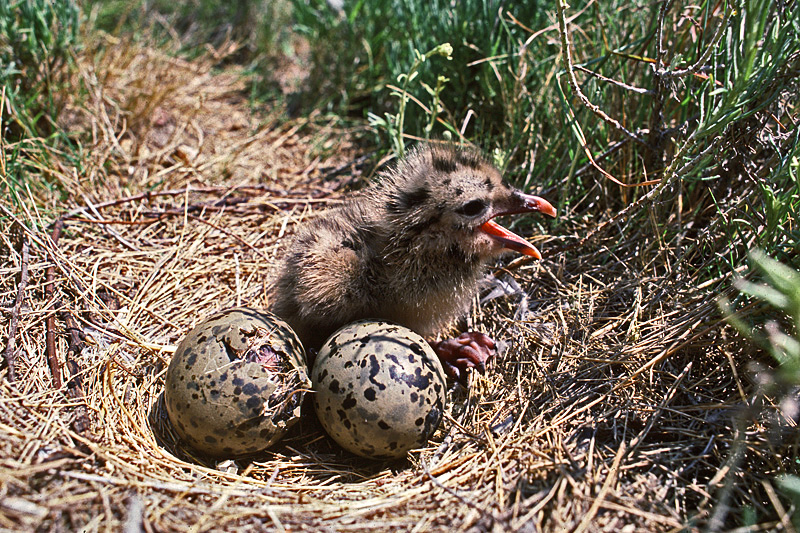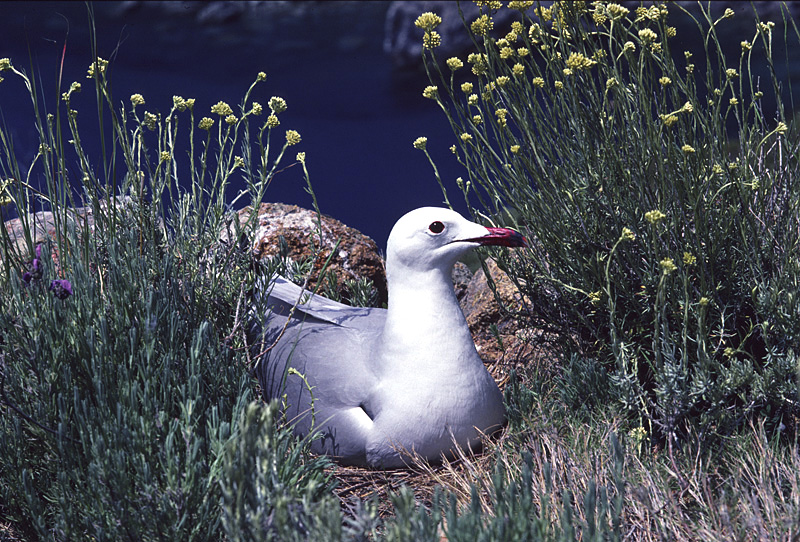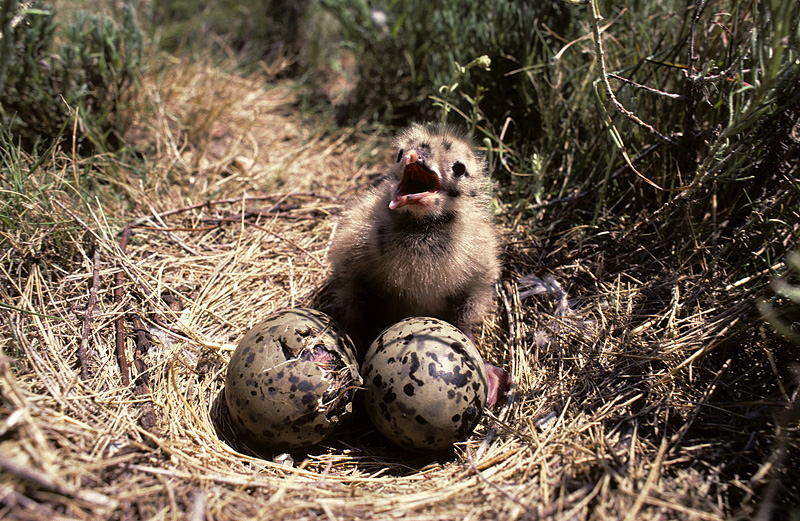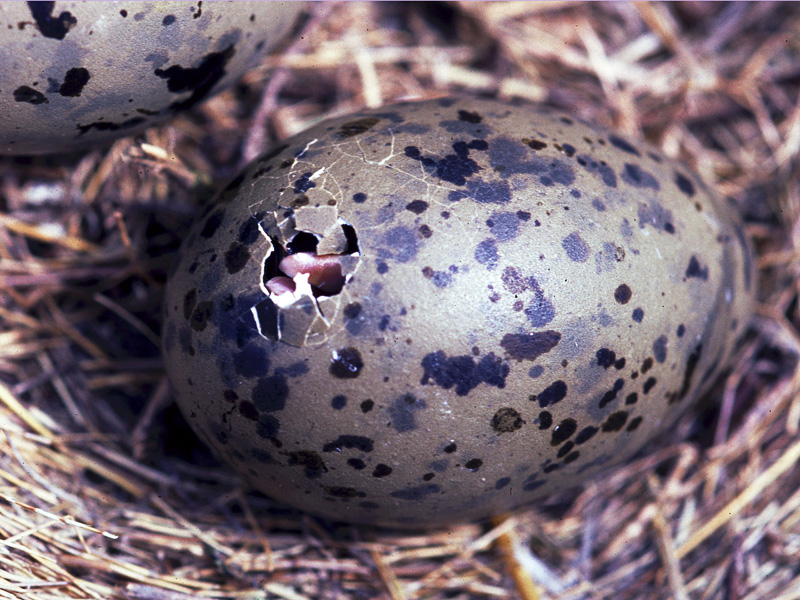
the Audouin's Gulls


It was a lovely morning in May 1987. The
It should have simply been a quiet weekend’s holiday, otherwise my wife Daniela would certainly not have followed me there. But as often happens things did not turn out as expected, and Nature had a surprise in store for me.
As we were walking along a rough track that wound round a huge rock face and would have led us down to the sea, the persistent calls of gulls above us inevitably alerted my attention.
Above the cliffs several gulls were circling in the sky, calling vigorously, and in full breeding season too! I immediately assumed this was another colony of Yellow-legged Gulls (Larus michaellis), but without a pair of binoculars I could not be sure I was right.
In life it is often possible to resist temptation, however difficult this may be at times. But for an ornithologist, amateur or professional, it is virtually impossible to ignore a colony of breeding birds. Thus, after an inevitable brief squabble with my sweet wife, and ignoring her lively warnings together with their inevitable consequences, I decided to clamber up towards the cliffs in any case, to make sure my hunch had been correct.
Once I had reached the summit I found myself in a breeding colony of more than 30 pairs of squawking gulls, but the true surprise was yet to come.
I still recall the incredulity I felt when I noticed the bright red beak with the black terminal band of a gull that had perched next to its nest, alarmed. They were not Yellow-legged Gulls after all, but Audouin’s Gulls (Larus audouinii), the rarest gulls in the world, that were decreasing in numbers in the
My curiosity had been rewarded, and how! Who cared about family arguments, and swimming in the sea - I had hit the jackpot!
We soon returned home, and I could not wait to share my enthusiasm with my friend and fellow ornithologist
We quickly organized ourselves and soon Paul and I were at Giglio once again, armed with camouflaged hides, long cables for firing the cameras at a distance, and all the necessary cameras/lenses.
In order to reduce disturbance to the rare gulls’ colony as far as possible, and to improve our chances of getting good shots, we decided to alternate our presence in the hide, which we had set up the precious evening.
The technique of approaching the hide together, and one of us returning back to the main path, fooled the gulls (they certainly didn’t excel in arithmetic) in believing that the alarming two-legged animal that had approached their colony had also gone away immediately, and thus the entire colony relaxed and returned to its normal activity within a few minutes.
After having spent two days from dawn to dusk in the hide taking photographs, the most exciting memory of that expedition was on our return, just when we had packed up the hide and all our equipment. In one of the nests at the far edge of the colony an egg was hatching, and the beak of an Audouin’s Gull chick was pushing its way through to a new life. It was a rare opportunity, and so I started taking some pictures of the egg hatching, but before the chick’s head emerged entirely from the egg, as I recalled Konrad Lorenz’s studies on imprinting. So, with a touch of regret I hurried away from the nest.
Imprinting, which is particularly strong in gulls, is that biological mechanism by which a chick, immediately after hatching, identifies its parent in the first moving object or animal they see.
I have often thought about this photographic opportunity, with a hint of regret, and of how I could have shot the entire hatching sequence of such a rare species, and of how unique these photographs would have been…. But I prefer to think that I allowed that Audouin’s Gull to start its life naturally, thus helping the already endangered species to survive in the wild. This is certainly more important than any photograph.
Later I was told that the following year this colony had moved to another cliff on the island, but since then Audouin’s Gulls have not nested regularly at Giglio. This is a pity, but luckily Audouin’s Gull numbers in

